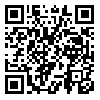Volume 9, Issue 4 (2018)
LRR 2018, 9(4): 1-32 |
Back to browse issues page
Download citation:
BibTeX | RIS | EndNote | Medlars | ProCite | Reference Manager | RefWorks
Send citation to:



BibTeX | RIS | EndNote | Medlars | ProCite | Reference Manager | RefWorks
Send citation to:
Kamyab M, Yaghoobi Janbeh Saraei P. Identity, Individuality and the Body Performance in Jamalzadeh’s Yeki Bud,Yeki Nabud Stories. LRR 2018; 9 (4) :1-32
URL: http://lrr.modares.ac.ir/article-14-14004-en.html
URL: http://lrr.modares.ac.ir/article-14-14004-en.html
1- PhD Candidate in Persian Language and Literature, Kurdistan University Kurdistan, Iran
2- Associate Professor of Persian Literature University of Kurdistan , p.yaghoobi@uok.ac.ir
2- Associate Professor of Persian Literature University of Kurdistan , p.yaghoobi@uok.ac.ir
Abstract: (8092 Views)
Due to individual regression in ancient world, body and its components were not important identity-making elements in the semiotic system of Persian classic texts. On the other hand with the emergence of socio-cultural factors in the contemporary world, literary subjects reflection based on body and its requirements became common, and body -orientation and body knowledge were the bases of social and textual subjects-objects introduction and calling. In this study the body-oriented reflection of subjects-objects identity of Jamalzadeh’s Yeki Bud,YekiNabud is analyzed in the light of “body as a symbolic-sociological theme” based on Weblen and Bourdieu’s theories. Because Jamalzade is one of the first Iranian story-tellers who has relied on body portrayal and its component to reflect the identity of textual and inside-story subject-objects identity and to reproduce the identity of subject-objects, both directly and indirectly reflected as actions and conditions which emanate from body and contain consumption and taste signs. The conclusion showed that in realistic narration, out of the mentioned subjects, three categories have been reflected:A)The high class who by means of cultural capitals such as: literacy, language, clothing and physical distance as well as different types of apparent and real consumption flaunts its power, and simultaneously they are degraded by satire and grotesque. B)the middle class with deprived and non-ostentatious cultural capital, which can be observed in clothing, language and lack of confidence which is seen in their physical distance from others. C)another class as the removed or silent one, in these reproductions, body-orientation and body-knowledge have been mainly organized in the form of actions and behaviors such as speaking, wearing, arranging body distance and some forms of body language; and this body orientation in the form of taste and consumption or signs of flaunting consumption and some types of cultural capital, not only has portrayed class distinction due to body, but also has reflected the anxiety, anger and struggle latent in them and has impeached them. Unlike the two previous classes, they have been affected by this classification of taste and consumption. Such narration along with cultural-social texture and reflecting the individuality of the subjects based on physical function, decreases the prestige of dominant discourses on the one hand, and reminds the forgotten prestige of the silent voices on the other hand.
Subject:
Linguistics
Published: 2018/10/26
Published: 2018/10/26
Send email to the article author
| Rights and permissions | |
 |
This work is licensed under a Creative Commons Attribution-NonCommercial 4.0 International License. |







